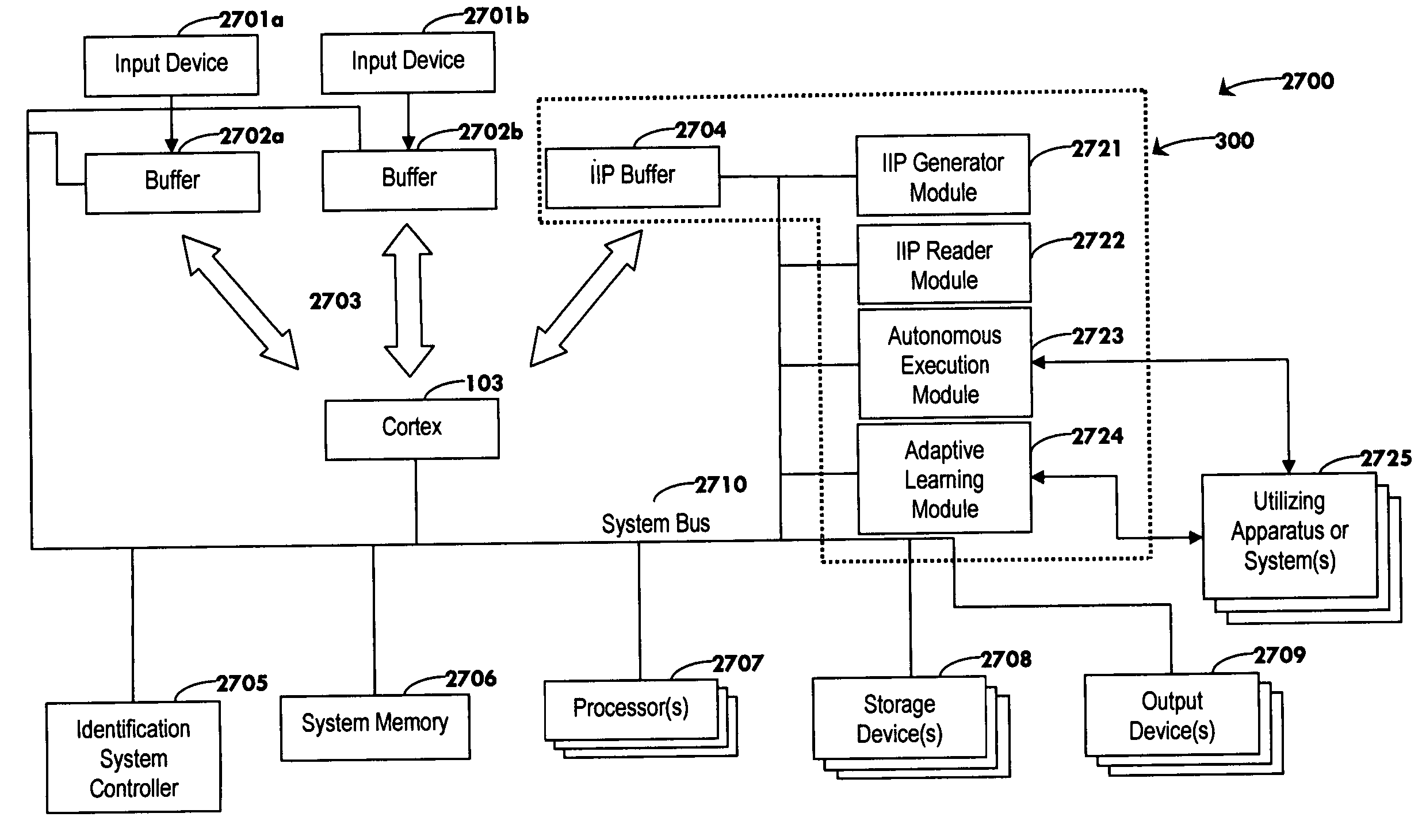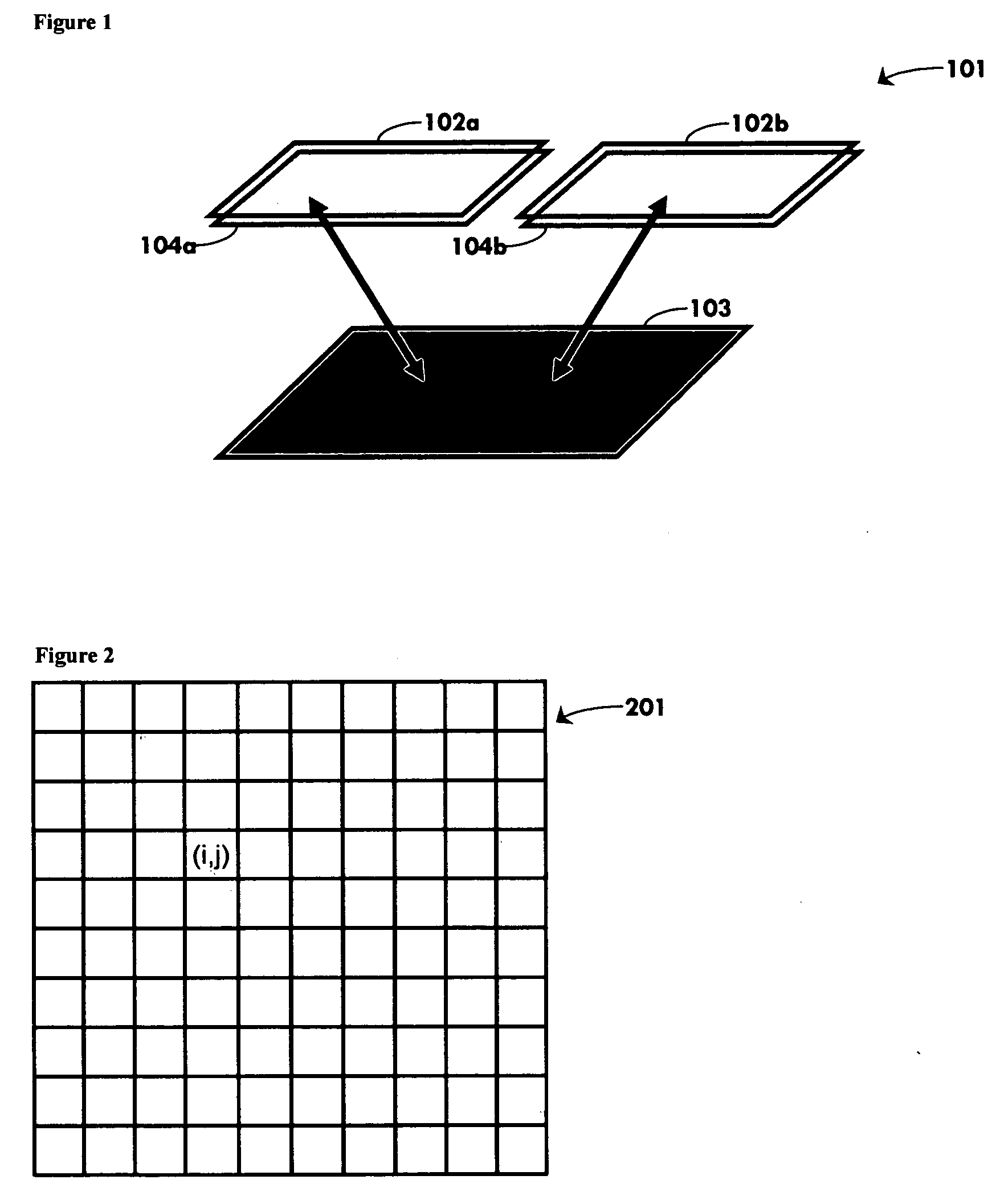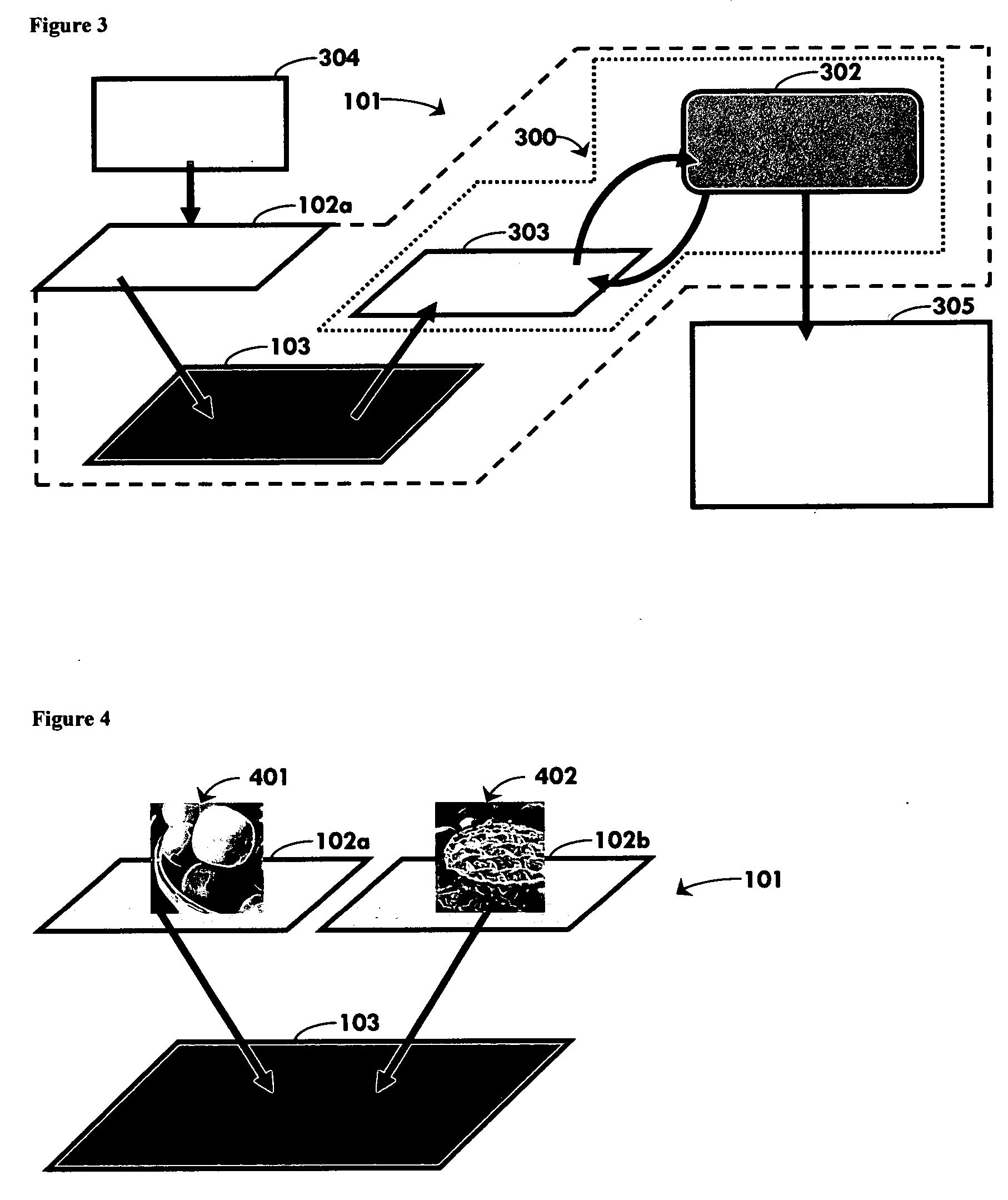Associative memory device and method based on wave propagation
a memory device and wave propagation technology, applied in the field of associative memory devices and methods based on wave propagation, can solve the problems of inability to identify patterns, inability to recognize patterns, and inherent resolution and measurement limitations of those devices, and achieve the effect of ensuring identification, retrieval and recognition, and clear and strong retrieval
- Summary
- Abstract
- Description
- Claims
- Application Information
AI Technical Summary
Benefits of technology
Problems solved by technology
Method used
Image
Examples
first embodiment
[0525] the present invention 2700, as described by FIG. 27, implements wave propagation 2703 with actual, physical waves, such as electromagnetic or sound waves. This embodiment consists of the following components. At least one buffer 2702 is needed for collecting data from a corresponding input device 2701. Additional buffers 2702n and their respective input devices 2701n, where n represents letters a, b, c, . . . , can also be used. Overall control of the associative memory device is provided by an identification system controller 2705, which can be implemented by a combination of software and hardware, such as a custom chip or computer board, depending upon the deployment requirements. The identification system controller 2705 is responsible for all logic and control functions not delegated to specific components, as described below. Other system components include the system memory 2706, provided, for example, by random access memory ("RAM") cards; one or more processors 2707, ...
second embodiment
[0536] In the present invention, wave propagation 2703 is simulated by software, which can be executed on computer hardware. That is, actual physical waves are not employed. Instead, wave propagation is modeled numerically through computation using a variation of the Helmholtz-Kirchhoff Equation, as described herein. Such modeling is referred to as numerical propagation. This embodiment is described by the block diagram shown in FIG. 27 and consists of the following components. At least one buffer (buffer 2702) is needed for collecting data from a corresponding input device 2701. Overall control of the present invention 101 is provided by the identification system controller 2705, which can be implemented by a combination of software and hardware, such as a custom chip or computer board, depending upon the deployment requirements. The identification system controller 2705 is responsible for all logic and control functions not delegated to specific components, as described below. Oth...
PUM
 Login to View More
Login to View More Abstract
Description
Claims
Application Information
 Login to View More
Login to View More - R&D
- Intellectual Property
- Life Sciences
- Materials
- Tech Scout
- Unparalleled Data Quality
- Higher Quality Content
- 60% Fewer Hallucinations
Browse by: Latest US Patents, China's latest patents, Technical Efficacy Thesaurus, Application Domain, Technology Topic, Popular Technical Reports.
© 2025 PatSnap. All rights reserved.Legal|Privacy policy|Modern Slavery Act Transparency Statement|Sitemap|About US| Contact US: help@patsnap.com



